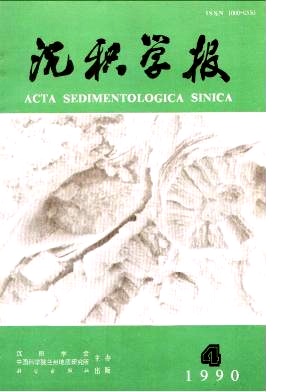COMPARISON RESEARCH OF COAST DEPOSITS CARBONATITE ON THEIR SEDIMENTOLOGY AND PETROLOGY IN SOUTHERN FUJIAN AND EASTERN GUANGDONG
- Received Date: 1989-01-24
- Publish Date: 1990-12-10
Abstract: The article is going on the distinguishing of dune rock, dune, seabeach sand, beachrock and some offshore deposits through comparison researches of their sedimentologic and petrologic features. The dune rock has great similarities to dune from the view of their sedimentologic features and landform distribution. Dip angle of the frontal deposit layer of the both is relatively large ( 30 ° ) .Components are mostly of middle to fine sands. The more favorable facing wind and sea, the more near by the frontal deposit layer, the dune rock is of, less source of slope wash and the cementation and sorting are better. A lot of slope wash, therefore, can be regarded as the principal marker of dune rock, by which it is distinguished from the non-marine deposits. The sedimentologieal difference is obviously obsered between beachrock and dune. The former was formed under the condition of windstorm tide and poorly sorted. The content of gravel and middle and coarse sands achievs over 80%. The beachrocks can be subdivided into marine sea-making and marine land-making. The former is mostly in the tide belt of the subsident or stable coast with a highery percentage of MgO molecule number (11.9-15.26), while the latter is mostly in the raised coast with a lower percentage (usually less than 5) .Generally, the MgO molecule number of the dune rock at 22m a.s.l. reaches 7.41%. Observations under have seveal that the cement of marine sea- making beachrock is composed mostly of rhombohedrens of high- Mg calcite and pessesses features of cementation under the current and vadose belt, whileof the marime land- making beachrock, it is composed mostly of granular and columnar calcite with low Mg and has the features of vadose cementation. Therefore distinguishing of dune rock from beachrock is not mostly according to the characteristic of the petrology but that of sedimentlolgy. The hard ground of the seabed, which is referred to in this article, is probably the cementation of calc-mucus discharged by the organism. The formation of dune on the sea floor is probably related to the ridge of tidal sands of the zone.
| Citation: | Xu Qihao. COMPARISON RESEARCH OF COAST DEPOSITS CARBONATITE ON THEIR SEDIMENTOLOGY AND PETROLOGY IN SOUTHERN FUJIAN AND EASTERN GUANGDONG[J]. Acta Sedimentologica Sinica, 1990, 8(4): 68-76. |






 DownLoad:
DownLoad: